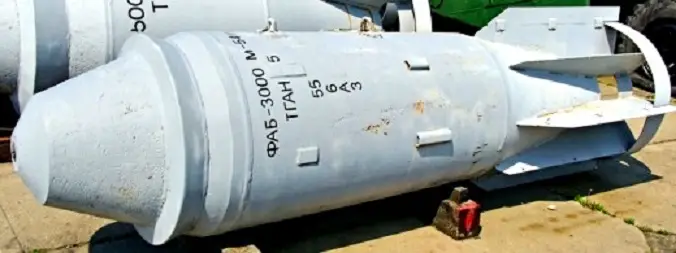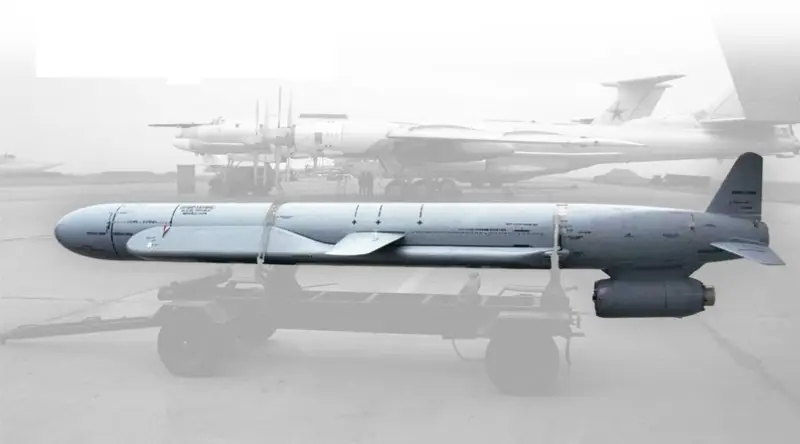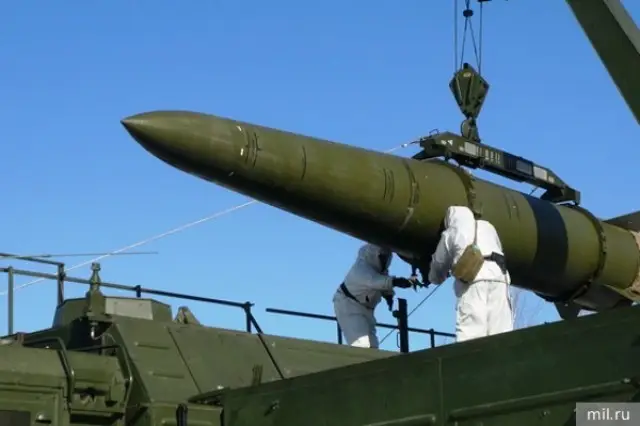The Kh-101 cruise missile with a reinforced warhead and the prospects for creating modular long-range precision weapons

At the end of March this year, Ukrainian sources reported that during the next massive night missile strike, the Aerospace Forces (VKS) of the Russian Federation (RF) used the Kh-101 cruise missile (CR), carrying a warhead weighing about 800 kilograms, which is almost twice the mass of a standard warhead. Presumably, this was achieved by eliminating some of the fuel tanks and reducing the overall flight range of the missile system.
Based on open sources, the range of the KR X-101 ranges from 3 to 000 kilometers; given the size of the territory of Ukraine, reducing the flight range of the KR X-5 in favor of strengthening its warhead seems quite justified. Recently, the Armed Forces (AF) of the Russian Federation have been paying increased attention to Ukrainian infrastructure facilities, such as hydroelectric power plants, thermal power plants, underground gas storage infrastructure and workshops of large industrial enterprises.
Most of these objects were built back in the Soviet period, so hated by Ukraine, and therefore were built conscientiously, and therefore their destruction to an irreparable state poses a certain difficulty. Perhaps this has something to do with it resumption of production of high-explosive bombs - FAB-3000. True, delivery of FAB-3000 equipped with unified planning and correction modules (UMPC) deep into Ukrainian territory will be associated with certain difficulties and risks.

FAB-3000 with UMPC can potentially wipe out any Ukrainian fortifications and structures within 50–100 kilometers from the line of combat contact (LCC) from the face of the Earth.
Almost all samples of Russian high-precision weapons long-range weapons are equipped with warheads weighing about 500 kilograms or less. The exception is the Kh-22 aeroballistic anti-ship missiles (ASMs) with their warheads weighing 960 kilograms, but presumably their guidance accuracy is insufficient to hit targeted highly protected objects, and on the modified Kh-32 anti-ship missiles the warhead weight is approximately reduced in favor of increasing the firing range .
Also, warheads weighing about 750–1 kilograms, again, according to open sources, are available on Anti-ship missiles of the P-500 “Basalt”, P-1000 “Vulcan” and P-700 “Granit” projects, but they have not yet been used in Ukraine, although they could potentially.
Thus, apparently, increasing the warhead power of long-range precision weapons is an objective necessity; in addition, this may only be the beginning of the modernization of existing and the creation of new models of long-range precision weapons with a modular design that allows you to quickly change the warhead and vary the flight range and install additional equipment depending on the application conditions.
Range of flight
Flight range, firing range, is one of the main characteristics of long-range precision weapons. At the same time, as the conflict in Ukraine has shown, it is not always necessary to shoot at the maximum range; as a result, a significant part of the fuel can essentially be wasted - the remaining fuel of significant destructive power that fuels cruise missiles will be unused and will burn out when the missile launcher is detonated.
In this case, the use of modular fuel tanks in combination with a modular warhead seems quite justified; shorter range means greater destructive power of the missile. By the way, in some cases, external conformal fuel tanks can be installed on the KR, as was done with the KR X-55/555.

KR X-555
At the same time, it is necessary to understand that this opportunity will not be realized for all types of high-precision weapons. It is one thing to install modular fuel tanks with liquid fuel on/on a cruise missile, another thing is to implement something similar on the Iskander operational-tactical missile system (OTRK) missile with its solid-fuel rocket engine or on its relative - the hypersonic aeroballistic missile of the complex "Dagger".
Although here the possibility of playing with the range and destructive power cannot be completely ruled out, however, versions of such a missile will be implemented directly in production, while in the case of cruise missiles, the principle of changing the range and mass of the missile warhead directly in military units can potentially be implemented.
Warhead
Here we have two options.
Firstly, we can change the warhead without changing its mass.
Secondly, we can increase the mass of the warhead by reducing the missile’s flight range by dismantling part of the fuel tanks, as was presumably implemented in the KR X-101 mentioned at the beginning of the article.
Let's start with the second option.
What can increasing the mass of warheads provide?
The answer is obvious - greater destructive power, and it can be expressed in different ways, for example, an increase in explosives and fragments/ready-made submunitions will cause more significant damage to openly located manpower, equipment and other objects, while using the mass reserve to install a durable hull will allow you to hit highly protected and buried objects.
There is no linear relationship between an increase in the mass of a warhead and its destructive properties, even for nuclear weapons - it is more profitable to strike with several ammunition of a smaller mass than with one ammunition of a larger mass. But this is more about the affected area, but what if we need to destroy a point, but highly protected object, this is where the mass of the explosive (explosive) and the mass/strength of the warhead body come first.
If we want to increase the destruction area, then it is better to use cluster munitions, while the permissible mass of the warhead, of course, will also matter, since this will affect the number of submunitions.
Now let's move on to the first option - changing the type of warhead without changing its mass.
In fact, a number of long-range precision-guided munitions are already equipped with different warheads, for example, the missiles of the aforementioned Iskander OTRK can carry both monoblock and cluster warheads, not to mention a special warhead (with a tactical nuclear charge). Actually, the KR X-101 exists in the modification of the KR X-102 with a special warhead.

Iskander OTRK missiles can be equipped with various warheads. Image by Mil.ru
However, these are all just factory versions of these missiles; they do not allow you to quickly change the warhead depending on the situation on the battlefield. It can be assumed that the KR X-101 with a reinforced warhead was also made at the factory, that is, this is just another modification, but this does not mean that such a solution is optimal.
Modular equipment of the Kyrgyz Republic
Of course, most of the high-precision long-range weapons will still be produced with one or another charge “in the base”, however, it is possible that understanding the objective need to vary the types of warheads in the Kyrgyz Republic will lead developers to the creation of modular designs that allow changing the flight range, power and the type of combat unit directly in the troops, depending on the tasks to which this missile system will be involved.
This will make it possible to flexibly plan the deployment of forces and means to destroy certain targets. For example, to destroy a strong workshop building, a reinforced high-explosive warhead can be used, and to attack an airfield with an openly located aviation A cluster warhead would be a better technology.
By the way, earlier we said that equipping the Kh-22 aeroballistic anti-ship missiles with cluster warheads could partially compensate for the low accuracy of their guidance when attacking area targets.
As part of a massive strike delivered by a missile launcher, some of them could be equipped not with warheads, but with electronic warfare (EW) equipment necessary to cover other missiles, and part of the missile launcher could carry reconnaissance equipment with feedback, allowing one to assess the effectiveness of the strike and identify new goals.
Within the framework of a modular design, the composition of the Kyrgyz Republic’s self-defense means can change, ranging from their absence to devices for releasing thermal and dipole traps, and even towed decoy release module.

A cruise missile, presumably an X-101, shoots decoys
Modular configuration of OTRK missiles
With OTRK missiles everything is more complicated; it is unlikely that on a missile with a solid propellant rocket engine it will be possible to implement a modular design that allows you to play with the range and weight of the warhead. Nevertheless, some elements of modular design can be incorporated into these missiles.
Of course, we are talking about replacing warheads directly in the troops, and the mass of the warhead does not have to be the same in all variants; a scenario is quite possible when a more massive warhead will be used when firing at a shorter range, of course, provided that its dimensions allow it to be placed on a rocket.
The changed alignment may well be compensated by the missile control system, for example, the flight range of the American Trident II submarine-launched ballistic missile (SLBM) with a maximum payload of 2 kilograms is 800 kilometers, while with a reduced payload the flight range will be 7 kilometers - the difference is almost one and a half times. Most likely, the thrown payload also changes by about 800–11 times, but no problems with alignment arise.
Separately, it is necessary to say that as the capabilities of the enemy’s air defense and missile defense systems (AD/BMD) increase, it may be necessary to transition to a detachable warhead of OTRK missiles, in this case, its size and visibility will significantly complicate interception in the final section, and the hull separated on the descending branch of the trajectory will play the role of a decoy target, and possibly a source of interference if supplemented with electronic warfare equipment.
Conclusions
War is the best catalyst for the development of weapons; it also serves as a factor of natural selection, when the most effective solutions gain the right to life, and unsuccessful ones sink into oblivion.
We see how cruise missiles have evolved over the course of the SVO - thermal/dipole traps have appeared on them, accuracy has apparently increased, and now they have added a warhead that has been strengthened almost twice as much.
Information